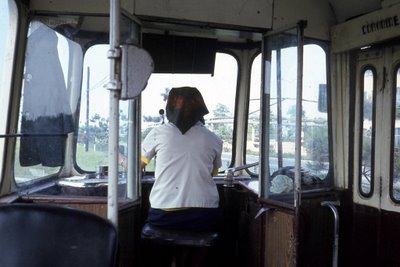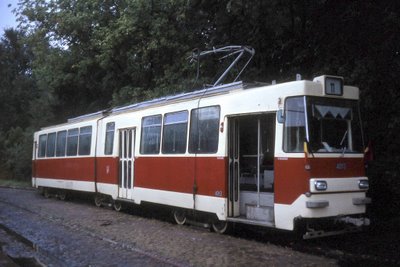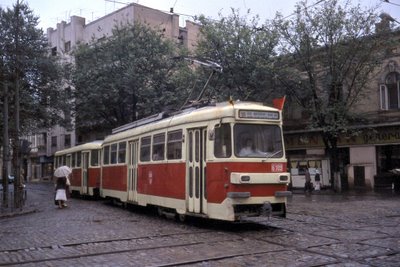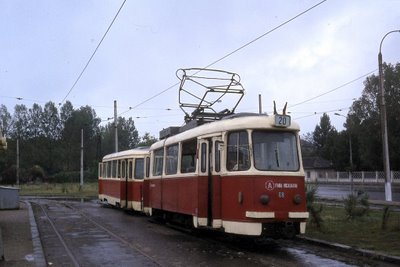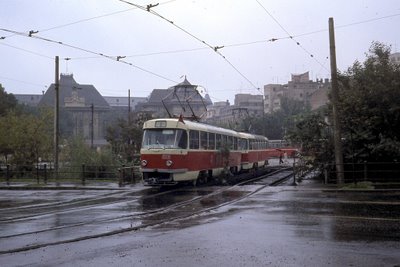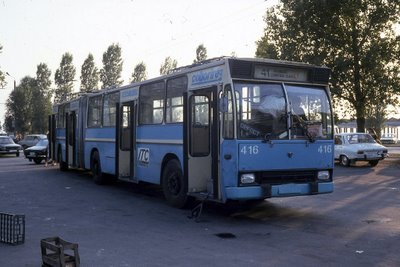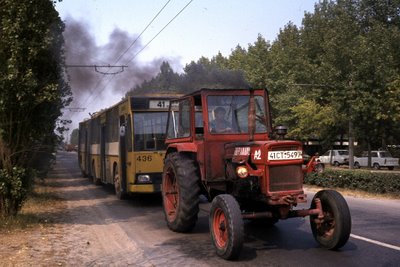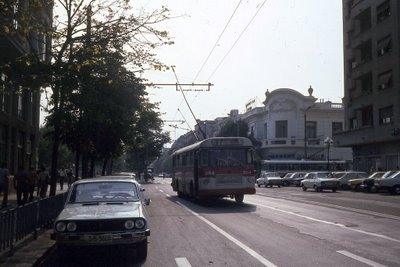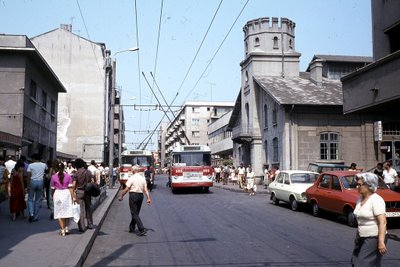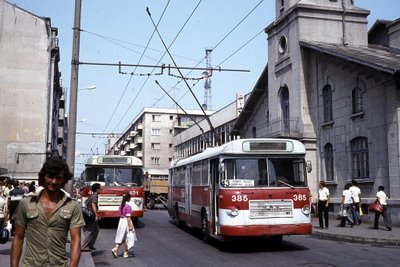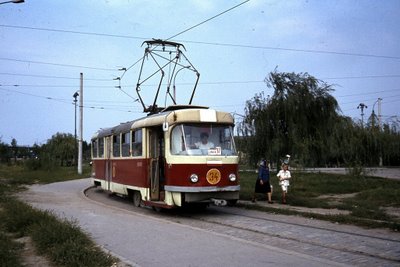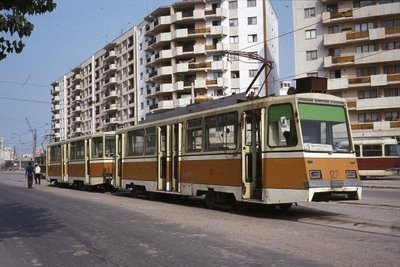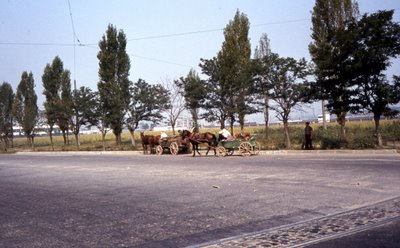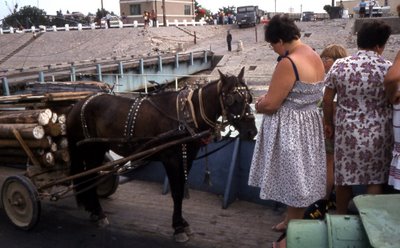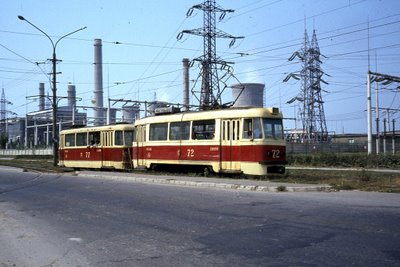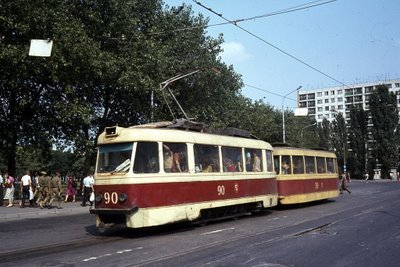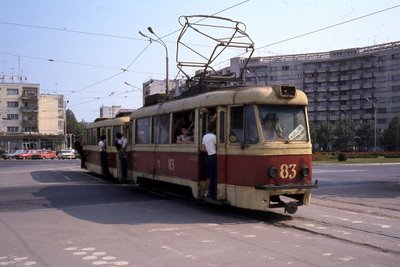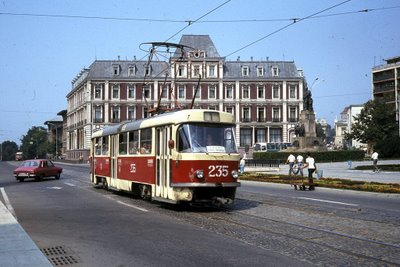
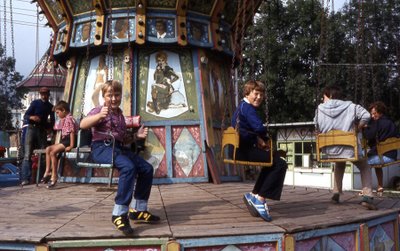
The Romanians considered their language to be superior to those of their neighbours. Everyone knows that Magyar is only related to Finnish and Estonian and the surrounding slav languages are written in Cyrillic script. Romanian is written in in the Latin script and claims to be the closest of all modern languages to Latin.
In 1982 hotels had to be pre-booked through the Romanian travel office in London and vouchers had to be pre-purchased for petrol. The hotel vouchers stated the name of the hotel and the date and covered room and breakfast. A cash refund at the official rate of exchange was given on checking in to pay for meals (if available). The petrol vouchers could be used at larger petrol stations that stocked 4 star petrol but only in multiples of 20 litres.
After taking some photos in Oradea we started to drive eastwards towards Iasi through the Carpathian Mountains. This was too far for one day so we spent the night in Targu Mures (or it might have been Cluj-Napoca). There were no trams here so in the evening after a frugal meal we went to the 'Parc Distractiv'.
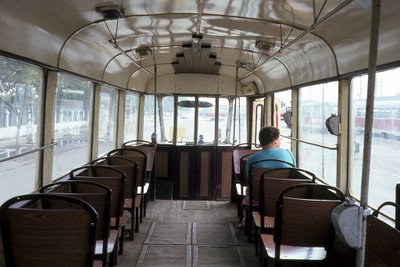 By the time I publish the next picture in this series Romania will be a member of the European Union. I am looking forward to visiting the country again in 2007 and wish Romania and all its people well for the future.
By the time I publish the next picture in this series Romania will be a member of the European Union. I am looking forward to visiting the country again in 2007 and wish Romania and all its people well for the future.
